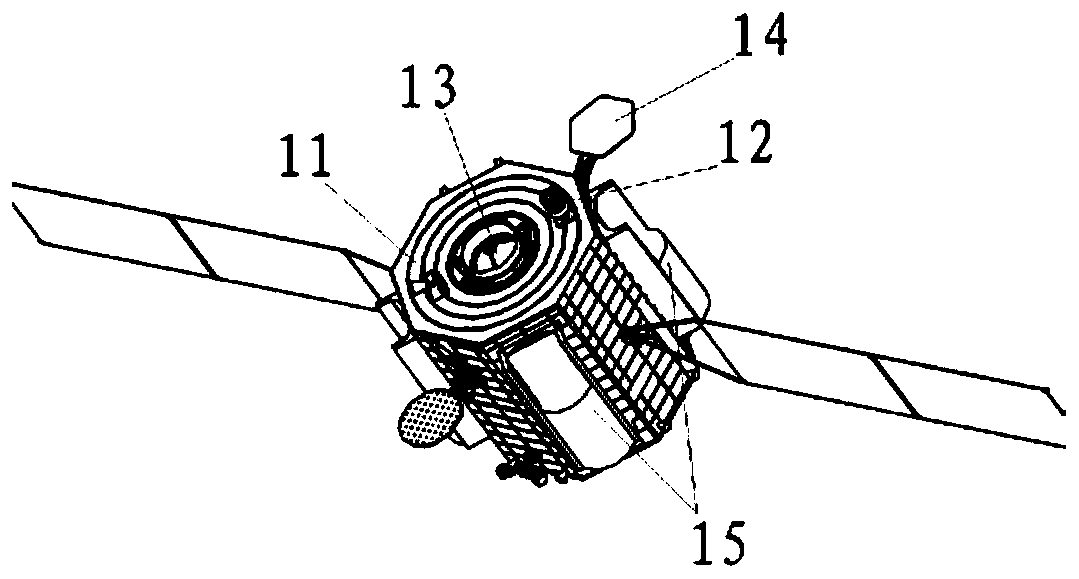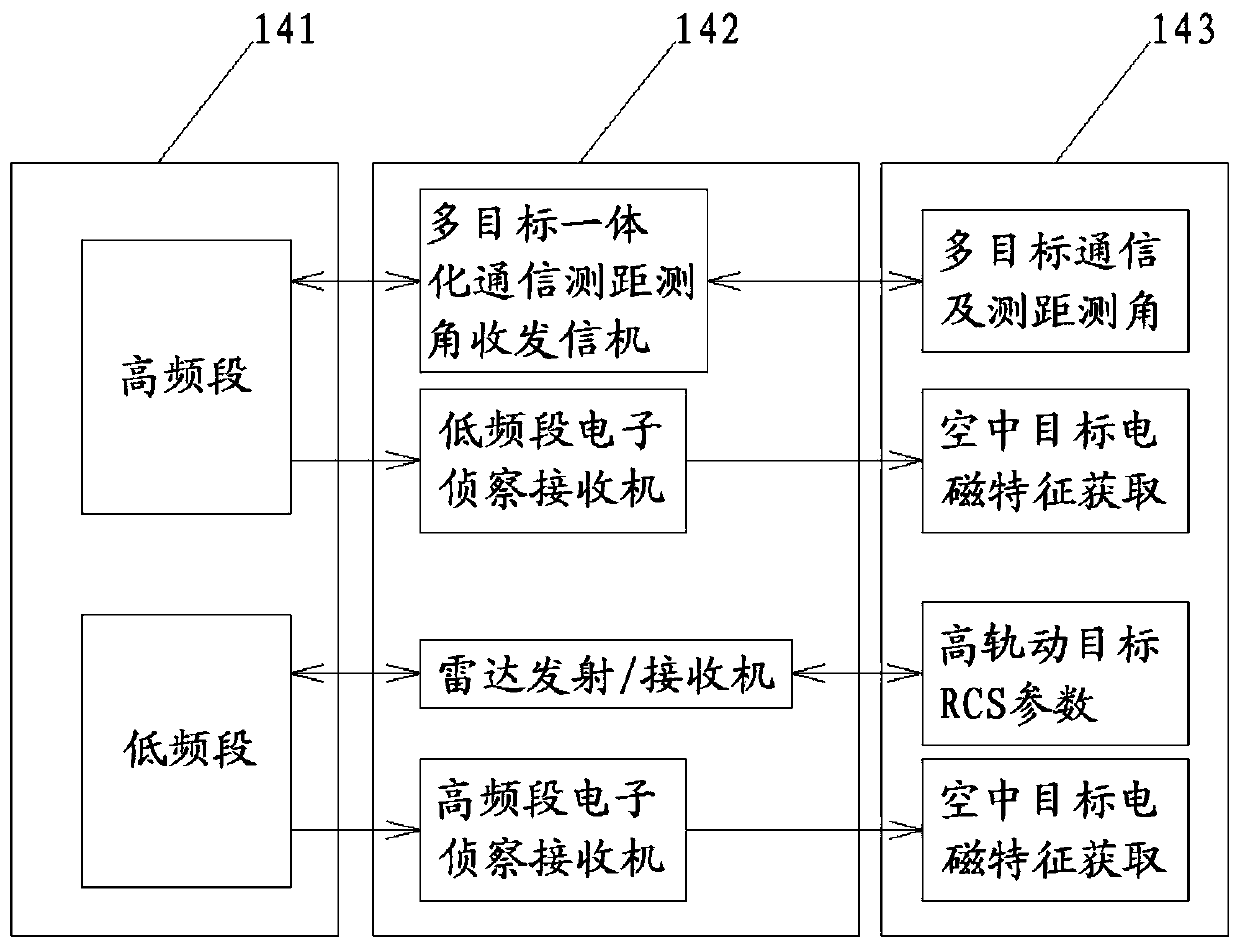Space vehicle system and deployment method
A space vehicle and aircraft technology, applied in the aerospace field, can solve the problems of poor deployment flexibility of space vehicles, and achieve the effects of long-term on-orbit operation, weight reduction, and improved carrying capacity
- Summary
- Abstract
- Description
- Claims
- Application Information
AI Technical Summary
Problems solved by technology
Method used
Image
Examples
Embodiment approach
[0050] According to one embodiment of the present invention, the deployment method of the present invention includes:
[0051] S1. Deploy at least one main aircraft 1 in the orbit of the main aircraft, and the main aircraft 1 patrols and detects space targets around the orbit of the main aircraft to obtain target information;
[0052] S2. Launch the slave aircraft 2 according to the target information, and deploy the slave aircraft 2 to the designated location according to the navigation and guidance information sent by the master aircraft 1.
[0053] According to one embodiment of the present invention, in step S1, there is at least one main aircraft 1 deployed on the main aircraft orbit, and by deploying the main aircraft 1 on the main aircraft orbit, the catalog camera 12, the imaging camera 13, and the radar 14 can Targets near the track are patrolled and detected. When more than one main aircraft 1 is deployed on the main aircraft orbit, adjacent main aircraft 1 are depl...
Embodiment 1
[0058] Deploy the spacecraft system near the geosynchronous orbit belt, such as 150km directly below the geosynchronous orbit. The space vehicle system and the geosynchronous orbit satellite have a certain relative speed, and can be used to patrol the geosynchronous orbit target.
[0059] In this embodiment, the functional module 23 of the slave aircraft 2 is an optical imaging camera. By rapidly deploying the slave aircraft 2, it can be used for approach and fly-by observation missions to targets. And through this method, multiple slave aircraft 2 are deployed to form a master-slave aircraft group, and cooperate together to complete the all-round observation task of multiple targets in space. The slave aircraft 2 is carried by the master aircraft 1. The slave aircraft 2 can quickly complete the deployment after receiving instructions, and return to the master aircraft 1 after completing the task. The process of deploying and returning from aircraft 2 is as follows:
[0060...
Embodiment 2
[0066] Deploy the spacecraft system near the geosynchronous orbit belt, such as 150km directly below the geosynchronous orbit. The space vehicle system and the geosynchronous orbit satellite have a certain relative speed, and can be used to patrol the geosynchronous orbit target.
[0067] In this embodiment, the functional module 23 of the slave aircraft 2 is a laser radar. By rapidly deploying the slave aircraft 2, it can be used for surveying the target. And through this method, multiple slave aircraft 2 are deployed to form a master-slave aircraft group, and cooperate together to complete the acquisition of all-round three-dimensional image information for multiple targets in space. The slave aircraft 2 is carried by the master aircraft 1. The slave aircraft 2 can quickly complete the deployment after receiving instructions, and return to the master aircraft 1 after completing the task. The process of deploying and returning from aircraft 2 is as follows:
[0068]a. The ...
PUM
 Login to View More
Login to View More Abstract
Description
Claims
Application Information
 Login to View More
Login to View More - R&D
- Intellectual Property
- Life Sciences
- Materials
- Tech Scout
- Unparalleled Data Quality
- Higher Quality Content
- 60% Fewer Hallucinations
Browse by: Latest US Patents, China's latest patents, Technical Efficacy Thesaurus, Application Domain, Technology Topic, Popular Technical Reports.
© 2025 PatSnap. All rights reserved.Legal|Privacy policy|Modern Slavery Act Transparency Statement|Sitemap|About US| Contact US: help@patsnap.com



